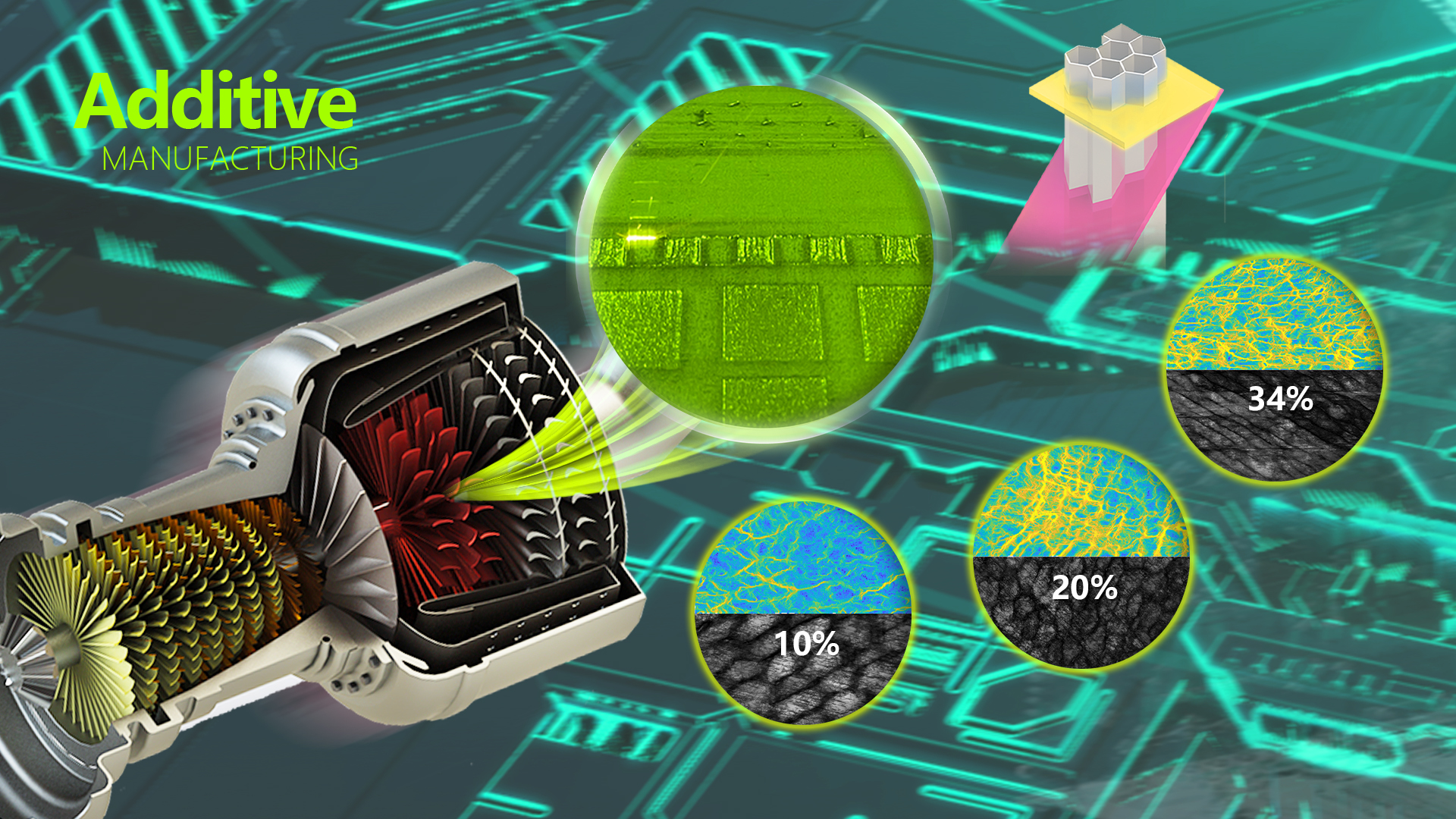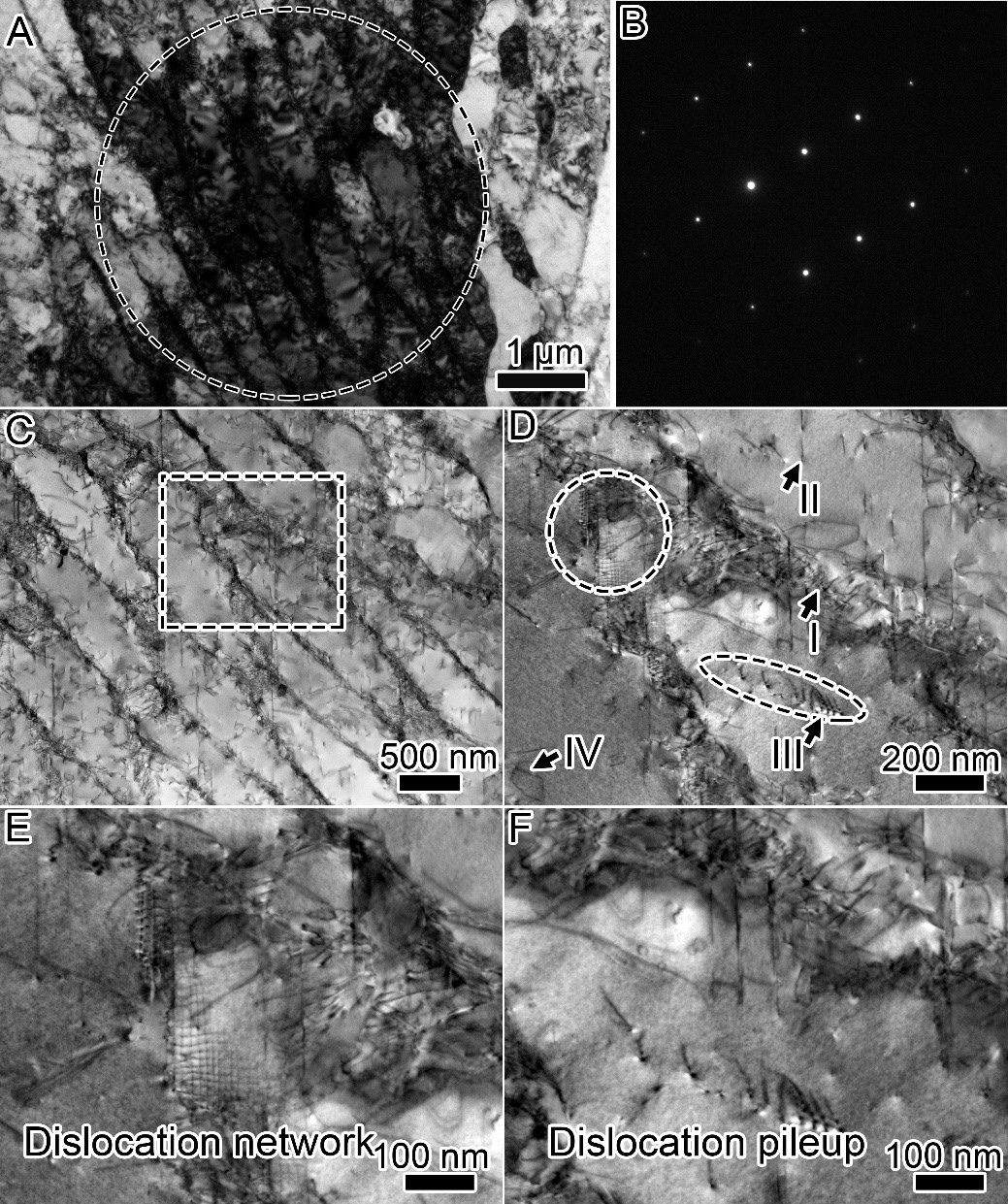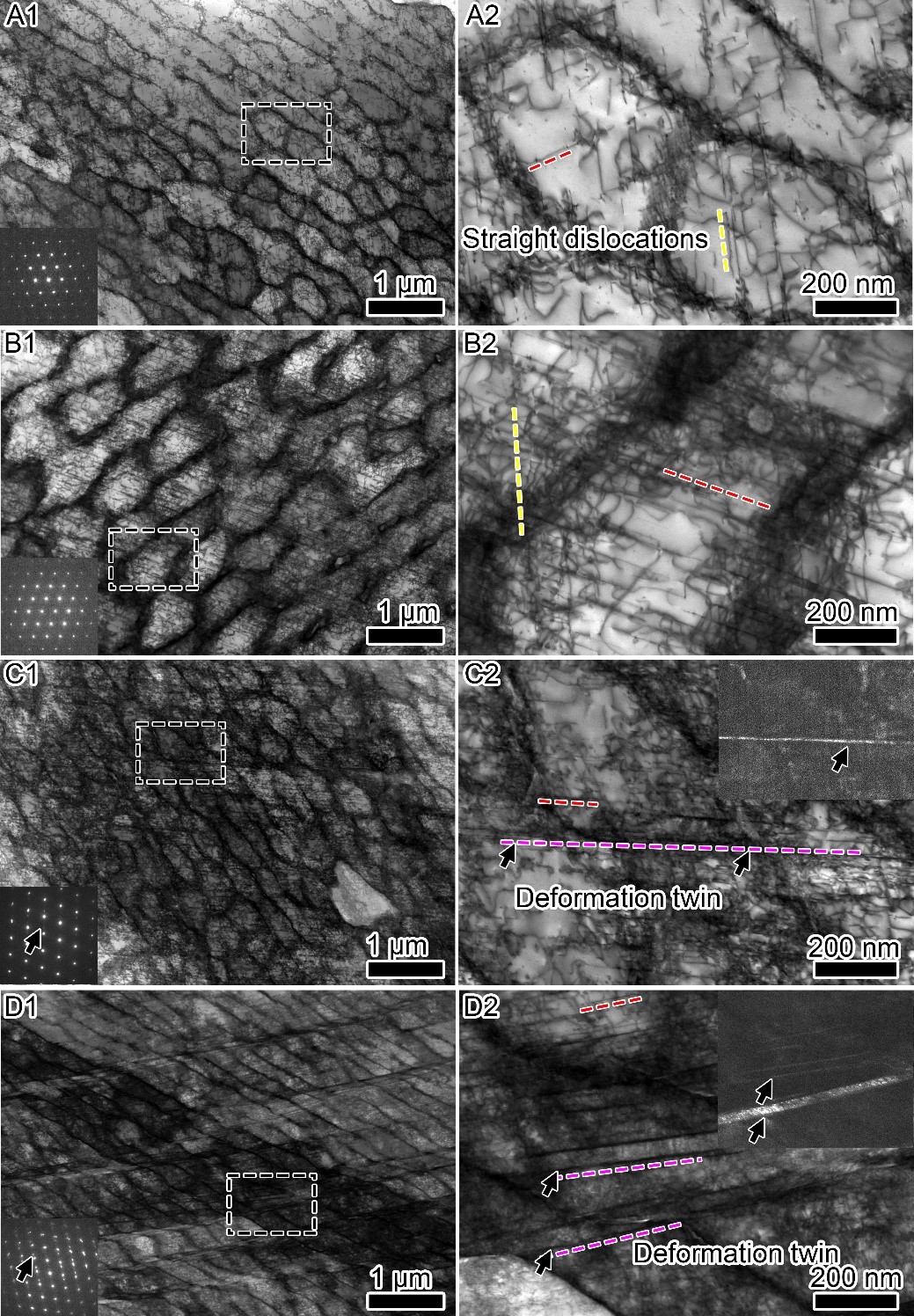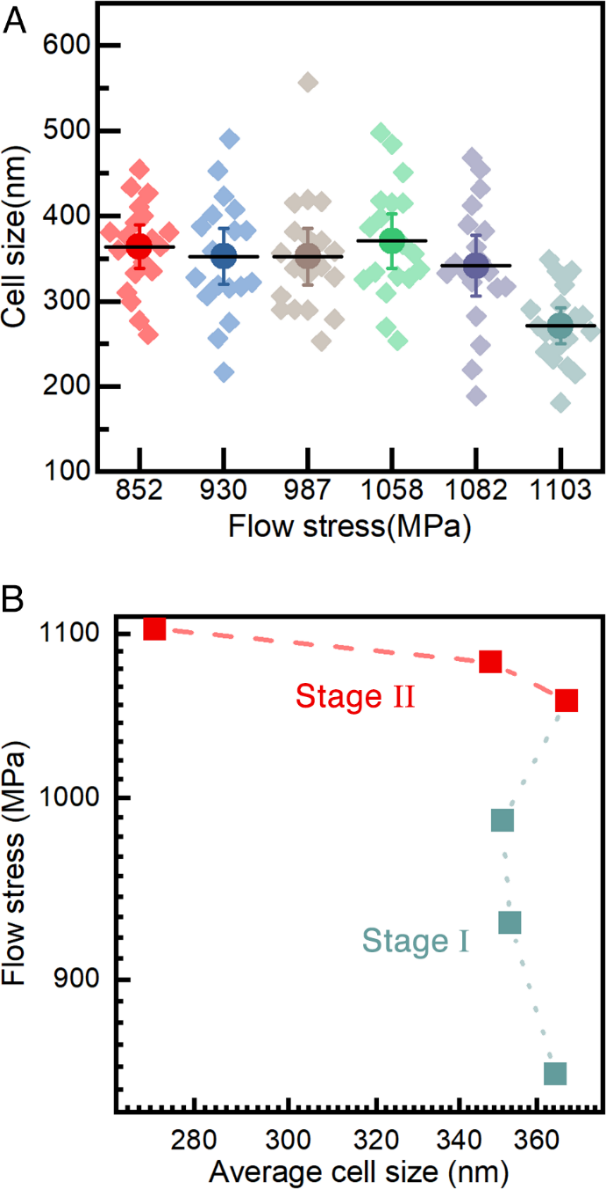Dislocation is one of the most important defects in crystal materials. Dislocation density, distribution, and characteristic size could significantly influence the mechanical properties of crystal materials.
Metal 3D printing is a new advanced digital manufacturing technology. A typical substructure, dislocation cellular pattern, is prevalent in the alloys prepared by 3D printing technology. Although studies have shown that the dislocation cellular pattern is the main reason for the increased strength of 3D printed alloys, the evolution law of the dislocation cellular pattern during plastic deformation is still unclear. It is crucial to understand the evolution law of dislocation cellular patterns to understand the strengthening mechanism and work-hardening behavior of materials.

Associate Professor Shuai Wang’s group in the Department of Mechanical and Energy Engineering at the Southern University of Science and Technology (SUSTech) recently found that the evolution of dislocations in 3D printed metal does not obey the deformation mechanism of metals fabricated by a conventional method.
Their paper, entitled “Evolution of dislocation cellular pattern in Inconel 718 alloy fabricated by laser powder-bed fusion,” was published in Additive Manufacturing, a top journal in the field of additive manufacturing. The group’s research results propose a prediction model for mechanical properties of 3D printed metals, which is helpful for the development of the property control theory of 3D printed metals in order to realize the high-quality integrated manufacturing of key equipment with “shape control – property control” in key fields such as aerospace and new energy.
Inconel 718 alloy is one of the most widely used high-temperature alloys, which has high strength, long fatigue life, corrosion, and creep resistance. It has a wide range of applications in the fields of aerospace, nuclear energy, and oil & gas industries. Prof. Wang’s team used cross-scale characterization to systematically study the microstructure of Inconel 718 alloy prepared by laser powder-bed fusion technology and the evolution of dislocation cellular patterns during tensile deformation.
It was found that the as-printed Inconel 718 alloy has various types of dislocation structures (Figure 1). The dislocation cellular pattern would not self-organize during tensile deformation (Figure 2), which is different from the dislocation cells generated in the metal after severe deformation.

Figure 1. Dislocation structure in the Inconel 718 alloy fabricated by laser powder-bed fusion

Figure 2. Morphology of dislocation cellular structures under different strains: A1-A2, ε=5%, B1-B2, ε=10%, C1-C2, ε=20%, D1-D2, ε=34.2% (strain-to-failure)
During tensile deformation, the plastic deformation mode is mainly dominated by dislocation slip, and deformation twins are also involved in coordinating plastic deformation at high strain levels. Results show that the strengthening mechanism of the dislocation cellular pattern cannot be explained solely by the Taylor equation or the Hall-Petch equation (Figure 3).

Figure 3. Relationship between flow stress and cell size
Minglin He, Research Assistant Professor of the Department of Mechanical and Energy Engineering at SUSTech, is the first author of this paper. Shuai Wang, Associate Professor at SUSTech, is the corresponding author.
The project was supported by the National Natural Science Foundation of China (NSFC) and the Shenzhen Science and Technology Innovation Commission.
Paper link: https://www.sciencedirect.com/science/article/pii/S221486042200238X
To read all stories about SUSTech science, subscribe to the monthly SUSTech Newsletter.
Proofread ByAdrian Cremin, Yingying XIA
Photo By